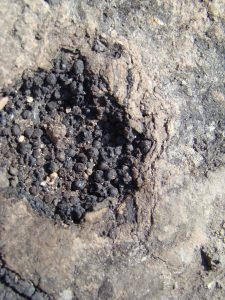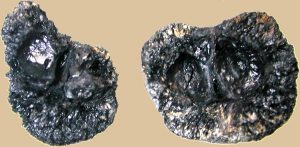
 Charred vegetal remains are of great interest while investigating the past. They yield a vast amount of information on ancient vegetation, cultivation and also on traditions of food consumption. Organic materials can be well preserved due to charring and under suitable conditions they survive for thousands of years.
Charred vegetal remains are of great interest while investigating the past. They yield a vast amount of information on ancient vegetation, cultivation and also on traditions of food consumption. Organic materials can be well preserved due to charring and under suitable conditions they survive for thousands of years.
At Százhalombatta-Földvár there is a great abundance of archaeobotanical material thus various plant processing activities, i.e. uses of plants, can be successfully studied.

Crab apple
During the Bronze Age crop cultivation was one of the major sources of food production besides animal husbandry, which is indicated by the large number of cereal grains, chaff and straw discovered during the excavation. Einkorn (Triticum monococcum), emmer (Triticum dicoccum), barley (Hordeum vulgare), spelt (Triticum spelta) and broomcorn millet (Panicum miliaceum ) are the most typical crops of the era that are all present at the site. Crops are hand in hand with weed species that is also found at the site (e.g. white goosefoot (Chenopodium album), bedstraw (Galium sp.), field bindweed (Convolvulus arvensis) and green bristle grass (Setaria viridis)). Pulses, such as pea (Pisum sativum), lentil (Lens culinaris) and faba bean (Vicia faba) were also recovered. Wild fruits were gathered as well that is indicated by the several crab apples (Malus sylvestris), European dewberry (Rubus caesius), cornelian cherry (Cornus mas), blackthorn (Prunus spinosa) or balck elder (Sambucus nigra) recorded on the site. Acorns are indicators of the oak forest inhabiting the area during the Bronze Age.
) are the most typical crops of the era that are all present at the site. Crops are hand in hand with weed species that is also found at the site (e.g. white goosefoot (Chenopodium album), bedstraw (Galium sp.), field bindweed (Convolvulus arvensis) and green bristle grass (Setaria viridis)). Pulses, such as pea (Pisum sativum), lentil (Lens culinaris) and faba bean (Vicia faba) were also recovered. Wild fruits were gathered as well that is indicated by the several crab apples (Malus sylvestris), European dewberry (Rubus caesius), cornelian cherry (Cornus mas), blackthorn (Prunus spinosa) or balck elder (Sambucus nigra) recorded on the site. Acorns are indicators of the oak forest inhabiting the area during the Bronze Age.
The spatial distribution of the macro botanical remains is also documented, in order to study the use of space. Areas of food preparation, cooking, consumption or waste disposal can be localised and can provide information on patterns of daily life on the tell. This eventually helps to a more nuanced understanding of the structure and use of social spaces within the settlement.